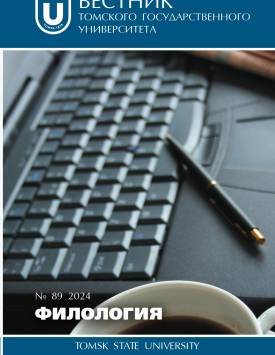The reception of the Knossos Labyrinth myth in Mark Z. Danielewski’s House of Leaves
The article analyzes how the multi-meaning universal figurative basis of the myth of the sacred labyrinth is artistically comprehended within the novel House of Leaves by Mark Z. Danielewski. The labyrinth here is the essential basis of content and form. The study proved the following. (1) The writer, revealing the image of the labyrinth, combines numerous discourses (architectural, philosophical, philological, poetic, metaphorical, marginal), and in all the cases the labyrinth is the root of itself, i.e. acts as a rhizome. (2) The novel contains all the semantic components of the traditional plot (the architectonics of the labyrinth, the monstrous creature in the labyrinth and the idea of sacrifice to it, the thread of Ariadne, the hero’s exit from the labyrinth), but they are subjected to significant transformations, which leads to a radical rethinking of the myth and a revision of the character symbolism of the novel. (3) The ancient world-cosmos, the world-tree in the novel is opposed by the world-chaos, the world-rhizome. There is no semantic center and all connections are non-linear, structureless, confusing here; the Studies ancient world as a harmonious unfolding Cosmos is opposed by a postmodern simulacrum. (4) Both the existential mode of understanding the Knossos myth and the matrix of the traditional plot are changing, the matrix is filled with new content related to historical and cultural innovations and the very way of understanding the history of the labyrinth, the Minotaur, Theseus and Ariadne. (5) The image of the rhizomatic labyrinth determines a special form of the ergodic, non-linear novel House of Leaves, in which the main text is adjacent to the text in the notes, growing into an independent story, where the plot lines spread out in a chaotic mess and suddenly finish. (6) The rhizome of the philosophical foundation of the novel is manifested in the synthesis of various genre elements (from horror and gonzo journalism to gothic, psychedelic, psychoanalytic, ergodic, fantastic, cinematic, graphic, beatnik and psychoanalytic novels) and in the idea of a synthesis of the arts, primarily fiction and cinematography. (7) The organizational principle of the rhizomatic labyrinth is realized in a chaotic composition, fundamental fragmentation, quotation and collage of the text, in the freedom of many narrative practices and narrative instances, which exclude the idea of absolute Truth and the only interpretation. The author declares no conflicts of interests.
Keywords
Mark Z. Danielewski, House of Leaves, Labyrinth of Knossos, Minotaur, Ariadne, Theseus, simulacrum, rhizome, postmodernismAuthors
| Name | Organization | |
| Ishimbayeva Galina G. | Ufa University of Science and Technology | galgrig7@list.ru |
References

The reception of the Knossos Labyrinth myth in Mark Z. Danielewski’s House of Leaves | Vestnik Tomskogo gosudarstvennogo universiteta. Filologiya – Tomsk State University Journal of Philology. 2024. № 89. DOI: 10.17223/19986645/89/11
